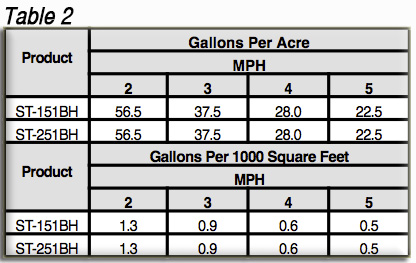Lawn Care 101: Pull-Behind Lawn Sprayers
Pull-behind lawn sprayers are used to apply fertilizers, herbicides, and pesticides in either spot or blanket applications. For spot applications, most sprayers come equipped with a spray hose that allows the user to apply chemical accurately into hard-to-reach areas. Broad or blanket applications cover large areas quickly utilizing a wide perpendicular tube with multiple spray nozzles known as a boom.
Some benefits of liquid chemical application are:
1. The ability to change chemical ratios – especially in regard to fertilizers, whose NPK ratio (Nitrogen, Phosphorus, Potassium) provides a delicate balance between inadequacy (nutrient deficiency) and overload (nutrient burn)
2. Precise application – spray hoses allow the user to delicately apply chemical in tight spaces
3. Faster rate of absorption – liquids are absorbed more readily by leaves and root systems without need to “water-in” the applied chemical; also results in decreased runoff risk
When applying liquids, be sure to consider the daily temperature and wind speeds. Liquids have an increased tendency to burn plant foliage when the temperature exceeds roughly 85 degrees Fahrenheit. On windy days, “drift” can become an issue, so be mindful of your proximity to flowerbeds, etc. to avoid unwanted exposure.
How to Calculate the Amount of Chemical to Apply
1. Determine the Size of Your Lawn
(In acres or 1000’s of square feet; 1 acre equals 43,560 square feet)
2. Choose your Driving Speed
Ideal speed is between 2 and 5 miles per hour. Mark off 50 or 100 feet of yard. From a rolling start, time how long it takes your to travel this distance. Consult Table 1 to determine your speed in miles per hour. Do not forget your exact gear and/or throttle position to maintain this speed!
3. Determine your Application Rate at your chosen speed
Consult Table 2 for Brinly sprayers
*For non-Brinly sprayers, contact the manufacturer as these rates will vary considerably

4. Multiply Application Rate by the Size of Your Lawn to determine Total Amount of Mixture Required
5. Divide Total Amount of Mixture Required by your sprayer’s Tank Capacity to determine Number of Tanks needed
6. Take Ratio of Chemical to Water (from the chemical’s label) and multiply by the Size of Your Lawn to determine Total Amount of Chemical needed
7. Divide Total Amount of Chemical by Number of Tanks needed to determine Amount of Chemical Per Tank
8. Measure out the Amount of Chemical Per Tank and fill the remainder of each tank with water, then mix thoroughly
9. If the Number of Tanks is not a round number (ie. 1.75 tanks), calculate the amount of chemical to put in the last tank by multiplying the Amount of Chemical Per Tank by the number after the decimal (ie. 0.75)
10. Dilute the last tank proportionally using the Ratio of Chemical to Water (from the chemical’s label)
Download the Brinly Lawn Sprayer Manual
Author: Brad Turner




